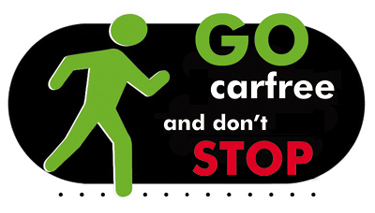Car-Free Days
Car Free Day is a day of action, which is in Europe by various organizations (for example, environmental organizations and churches ) initiates and supports. It is held annually on 22 September. In communities that participate in the European Mobility Week, but also occasionally deviated from this date by a few days.
The idea in general to renounce one day per year on the use of the car is already supported by almost all countries of the European Union and beyond by most municipalities and cities. Thousands of communities in Germany, hundreds in Switzerland and Austria as well as in other countries have enacted such calls.
Modes of implementation
Many cities and towns lock their centers for the duration of this day for the entire motorized traffic. Others are just severely criticized, especially by automobile associations and business representatives.
In addition to environmental protection associations, alpine and other associations and organizations, various politicians, etc. enter some traffic clubs for such Bedenktage - about the VCD and VCÖ. The latter propagate otherwise always frequent as possible waiver of the set of wheels and some of the possible alternatives to the car.
Alternatives to the car
- Greater promotion of public transport
- Increased cycling and Heel for distances up to 10 km and 2 km
Effects of car waiver
During the preparation of car-free day in 2004, it was noted that decreases in average for each person, the whole year dispensed per family on car use, the CO2 emissions by 490 kg per car. A similar value should also apply if individual for " motorized exit " decide about in groups of carsharing - if the remaining individuals on the use of this car use does not increase (because anyway declining capacity utilization ).
Besides the reduction of the greenhouse gas carbon dioxide a number of other positive effects are - even in a single day as September 22 - recorded. Some of these are:
- Reduction of other pollutants
- Reduction of noise
- Positive impact on health of residents
- Increase the recreational
- Promotion of environmental thinking
Negative effects are:
- Worse transportation for bulky or heavy goods
- In many cases, increased the time required for movement
- Economic losses due to lack of through traffic
- Discrimination against people who are dependent on medical grounds on cars for locomotion
Car Free Day concretely
Some municipalities in the German-speaking area of Europe refuse generally, to participate on September 22 at the car-free zones. Others prefer annular traffic restrictions around the old towns before, such as Vienna, however, where official distance (eg the City Councillor for Transport ) from the Car Free Day. The inner areas of many cities, at least for a few hours kept free of cars and the main traffic routes partially " returned to the people ." Bicycle and pedestrian traffic and public transport This will not only excluded, but increasingly enables - among other
- By free actions of tram and bus,
- Festivals and other events,
- Speakers Corners of MPs, councilors, mayors, ministers, or other politicians,
- Temporary accessibility of urban highways in some of those communities who reject the car-free day
- Arts actions (eg the distribution of warning squares )










